2 Reasons Why I don’t use Vinegar to Clean {and what I use instead}
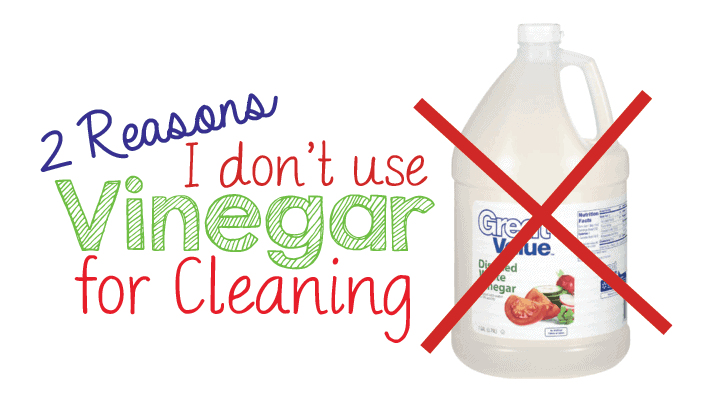
It’s very hard to talk about topics that are going to be shocking and potentially upset people. It’s even harder when it involves admitting you are wrong. This post is one of those posts.
Admitting that you’ve changed your path is difficult, just like when I talked about how We don’t eat coconut oil, some of you were very upset with me…. I want to state up front, I never lied to you. I never intentionally lead you wrongly when it comes to coconut oil or vinegar. It’s natural for us to all evolve in our thinking and I hope you can appreciate my honesty.
For many people the idea of jumping onto the healthy/natural/crunchy bandwagon is intimidating, for me upsetting my crunchy-partners-in-crime is even worse.
I have been using White Distilled Vinegar to clean my home for nearly 10 years. It was one of the first natural-living transitions I made …. and over the past 3 years I’ve shared my recipes and tips with all of you for using vinegar in your household cleaning as well.
My reasons for abandoning Vinegar as a cleaning solution have NOTHING to do with it’s effectiveness. Because I’m the first to admit that Vinegar is an AWESOME cleaner and it works great — and that’s why I used it for so long and also why it’s taken so long for me to come clean with all of you that I’ve stopped using it in my home.
2 reasons Why I don’t use Vinegar to Clean:
1. I say NO to GMOs.
You know those $2 gallon jugs of Distilled White Vinegar you’re buying? That vinegar is mostly made from GMO corn. Most of you will agree that you stay away from cheap food because it’s processed garbage, cheap Distilled White Vinegar is the same thing.
Every time you buy a $2 jug of Distilled White Vinegar you are supporting GMOs, conventional farming and Monsanto.
More importantly you are voting against natural products and organic farmers. Avoiding GMOs isn’t something that ends at my fork. My protest against GMOs is made with my WALLET. We get to voice our opinions and cast our votes of support with every single dollar we spend.
I’m not paying for GMOs to clean my house with. Of course you can avoid GMOs in your distilled white vinegar by choosing organic — however……more on that in reason #2
2. I’m not rich.
One of the most appealing aspect of cleaning with Distilled White Vinegar is that it’s really inexpensive. You can spend just pennies for cleaning supplies when you are paying $2 a gallon. However when you are voting with your wallet, and choosing GMO-Free, organic distilled white vinegar the cost rises significantly.
A gallon jug of Organic Distilled White Vinegar will cost you $28.
I don’t know about you but using 1 to 2 gallons of vinegar a month at $28 each is a little more than my budget can handle.
So much for vinegar being an natural & affordable cleaning option, right?
I know each and every one of us is at a different point in our health and natural living journey, all of you are not ready, willing or able to completely ditch $2 a gallon Distilled White Vinegar right this very minute… However, I do encourage you to learn from the mistakes I’ve made and embrace my passion for looking at the big picture.
We are the change.
Our money-votes are the single most effective way to advocate change.
Change is happening! Keep up the good work friends!
What do I use instead of Vinegar?
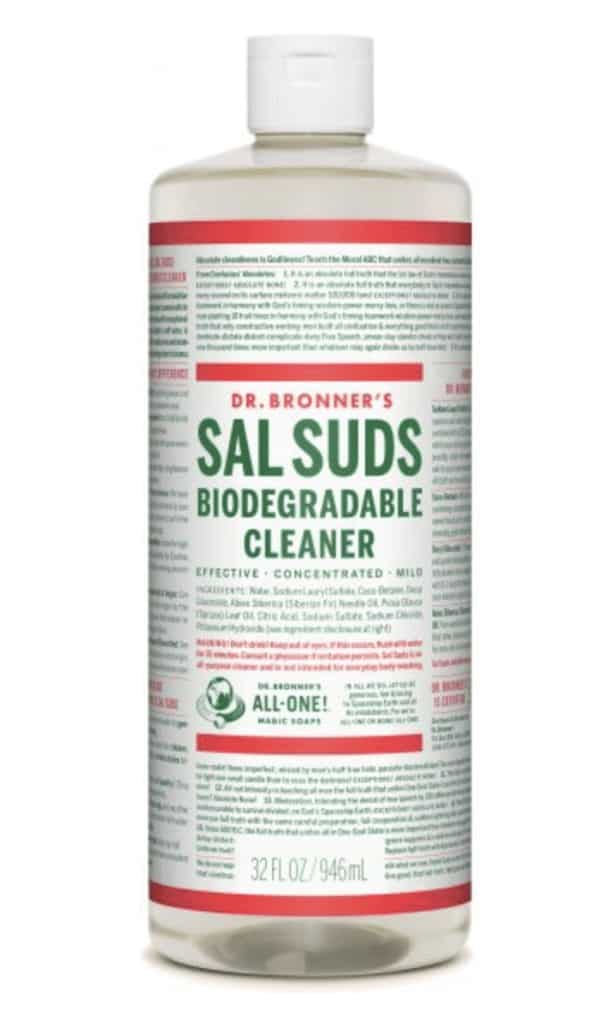
Dr. Bronner’s Sal Suds Liquid Cleaner is not a soap but instead is a concentrated hard-surface all-purpose cleaner. It is made with plant-based surfactants and natural fir needle and spruce essential oils (no cheap, harsh pine stump oil), without any synthetic dyes, fragrances or preservatives.
Perfect for general household cleaning (dishes, floors, laundry, etc.), it cleans and rinses with exceptional power, yet it is mild and gentle on the skin. Sal Suds Liquid Cleaner is equally effective in hard or soft water, rinsing freely, hot or cold. It is 100% cruelty-free, as certified by the Coalition for Consumer Information on Cosmetics, and it will biodegrade rapidly after doing its job.
We also rely on Dr. Bronner’s Sal Suds when we go camping for doing dishes and as a spray cleaner, since we are positive it won’t contaminate the soil or surrounding waterways.
And a little goes a long way! Since it’s a cleaning concentrate, you just need to add a few drops to clean your entire house.
Laundry: 2-3 Tbsp. for a large load in a top loading washer. Optional: ½ c. baking soda in wash cycle, 1 c. vinegar in rinse cycle. Use half these amounts for HE washes
All Purpose Spray: 1 tablespoon Sal Suds in a quart of water. Put the water in the bottle first. Use on most of the aforementioned surfaces.
All Purpose Spray is also used for the following:
- Stainless Steel Sink: Spray and sprinkle with baking soda from a shaker. Then scrub.
- Microsuede: Spray and scrub with a gentle circular motion.
- Wood: Painted or Sealed (not waxed) – Spray and wipe with a microfiber cloth
- Toilets: Empty toilet, spray bowl thoroughly, sprinkle baking soda on the brush, scrub bowl, let sit 10 minutes, turn water on, flush.
Carpets: 1 drop of Sal Suds in a carpet cleaner with hot water; All Purpose Spray for spots (use sparingly)
Veggie Wash: 1 drop of Sal Suds in a bowl of water. Dunk and swish the produce. Rinse
Window Wash: (aka Sal Suds Lite) ½ tsp. in a quart of water. Put the water in the bottle first. Spray and squeegee. Follow up with a spray of pure club soda and squeegee.
Dish washing by hand:
Pre-diluted: (my preference) ½ c. Sal Suds in a quart of water in a squirt bottle. Fill with water nearly to the top before adding Sal Suds.
Undiluted: ½ tsp. Sal Suds in a large sink of water. 1 drop Sal Suds for one pot.
Mopping: ½ Tbsp. Sal Suds in approximately 3 gallons of hot water. 20 drops tea tree oil optional. Put the water in the bucket first. Dunk mop (microfiber, preferably) and wring thoroughly.
Cars: ½ Tbsp. in a 3 gallon bucket of water. Put the water in the bucket first. Wet car down with hose. Wash with large sponge, or soft microfiber cloth. Rinse with hose before Suds dry.
HOW TO SAVE MONEY ON HEALTHY CLEANING SUPPLIES AND HOUSEHOLD ITEMS
I can’t help but mention that the BEST place to purchase Dr Bronner’s Sal Suds is through Grove Collaborative. You can purchase a 32 ounce bottle for just $13.99! (compared to Amazon where the cheapest I’ve found it is $19.99).
It’s is also where I purchase my beautiful glass spray bottles that I use for my DIY spray cleaners using Dr Bronner’s Sal Suds, since I add Essential Oils for scent and additional disinfecting. Anytime you use essential oils, even when diluted, it’s best to use glass containers. Essential oils can dissolve plastics over time.
Grove Collaborative is dedicated to helping everyone create a healthy, beautiful home. They grew out of a simple belief: the best natural products for your home and family should be the easiest to get.
At Grove Collaborative, they do the work to find amazing, affordable and effective natural products – from non-toxic laundry detergents that are tough on stains to sustainably sourced argan oil that will make your hair and skin glow.
CLICK HERE TO SAVE $10 OFF YOUR FIRST ORDER WITH GROVE COLLABORATIVE
Life is too busy for last minute errands so they deliver to your doorstep, on your schedule. They work in collaboration with partner brands that share our values and vision. Everything you’ll find here meets the Grove Standard:
- Uncompromisingly healthy.
- Beautifully effective.
- Sustainably minded.
- Amazingly affordable.
Grove Collaborative is a Certified B Corp. one of just 1,700 companies like Beautycounter, Patagonia, Method, Seventh Generation, Etsy, and Ben & Jerry’s that meet the world’s most rigorous standard for businesses supporting social, environmental and community wellbeing.
I also purchase my paper towel, toilet paper, cleaning brushes, sponges, tooth brushes head refills, razor refills, deodorant, etc. with Grove Collaborative’s convenient monthly shipment option. There’s no membership fees or contracts, but you WILL save time and money when you shop Grove Collaborative.
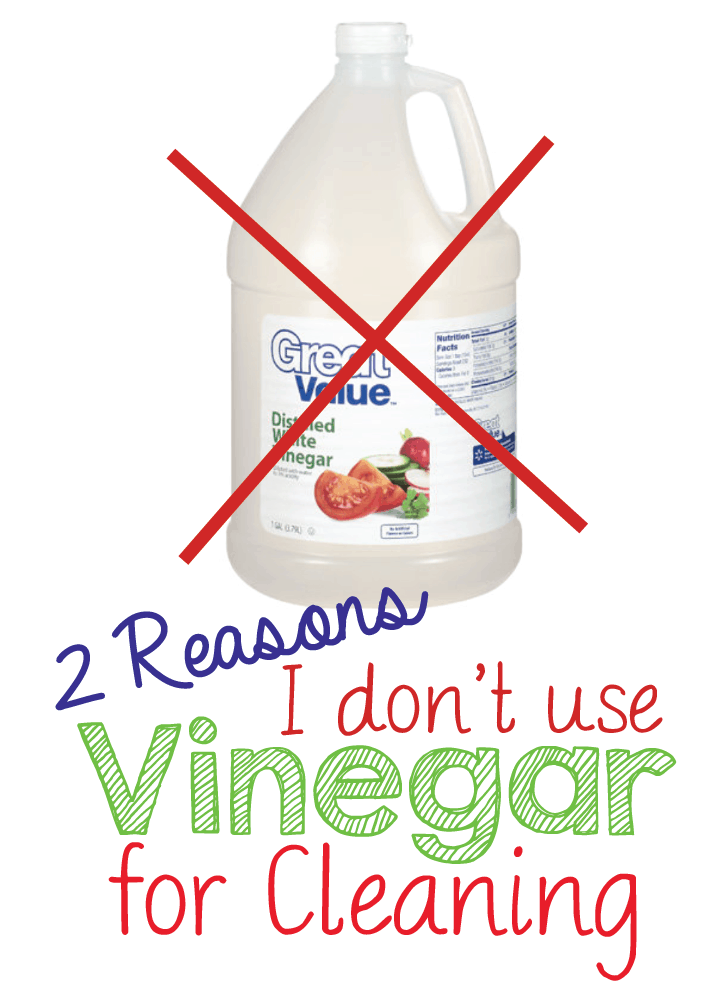
NOTE: this is not a sponsored post. It is not endorsed by or affiliated in any way with any of the brands pictured/mentioned. However there are links included in this post which will provide me with a small % or other referral fee for my recommendation – these links are no different than stores like walmart/target/costco getting a percentage of your sale in exchange for their advertising and/or operating costs. I, personally, would rather my friend make a couple bucks on my purchases instead of a large corporation… you too?
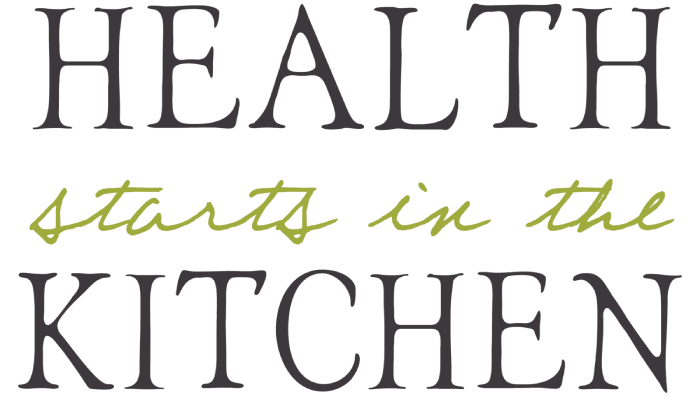
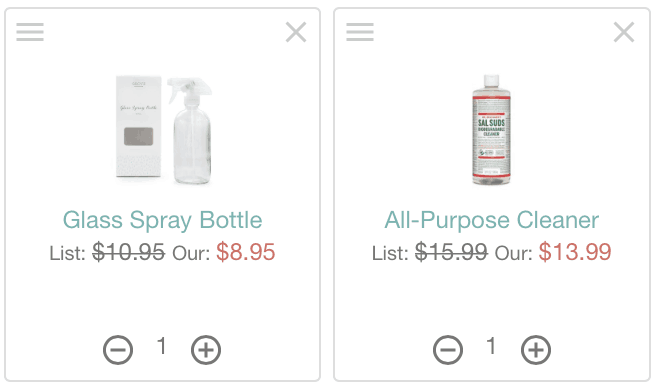
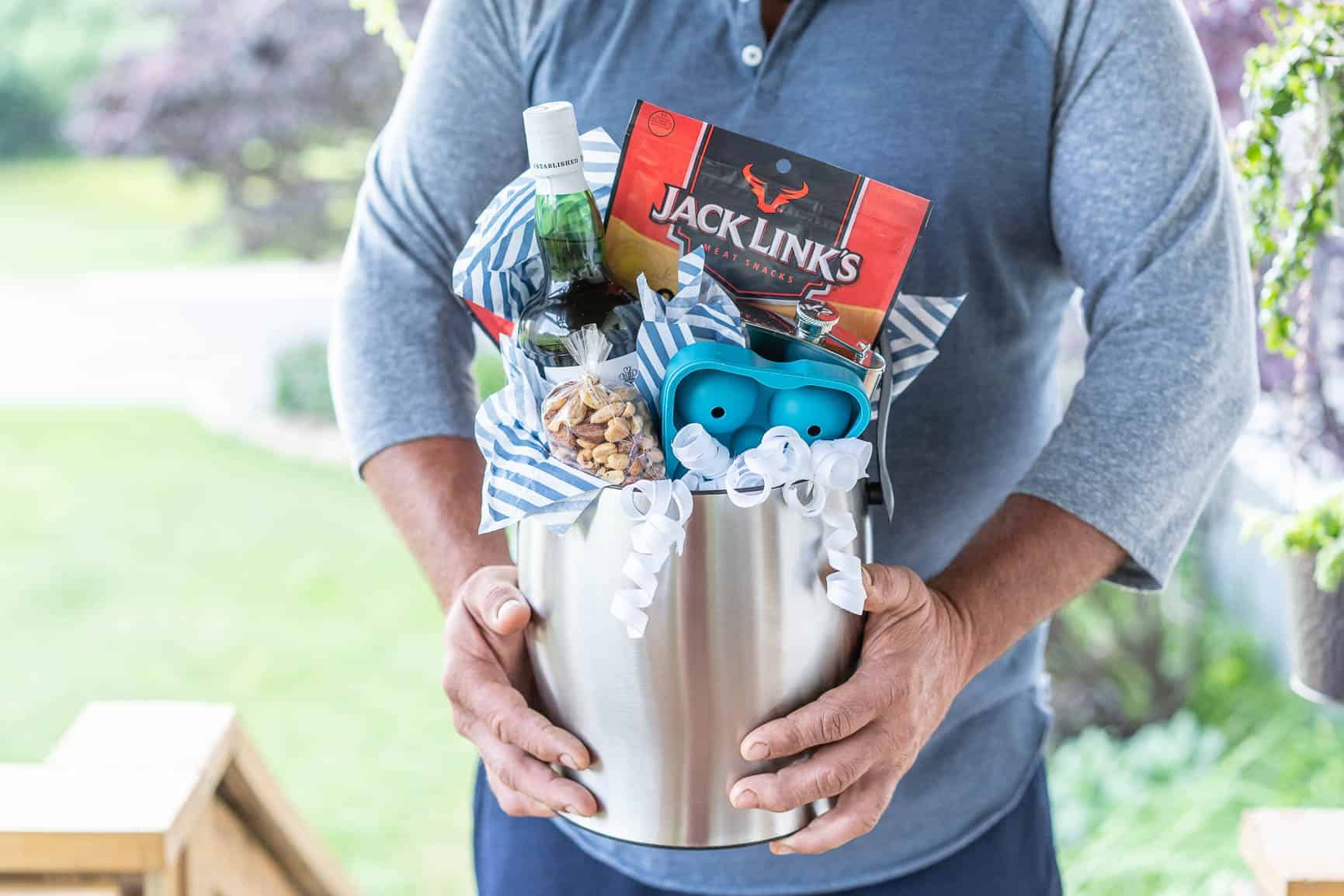

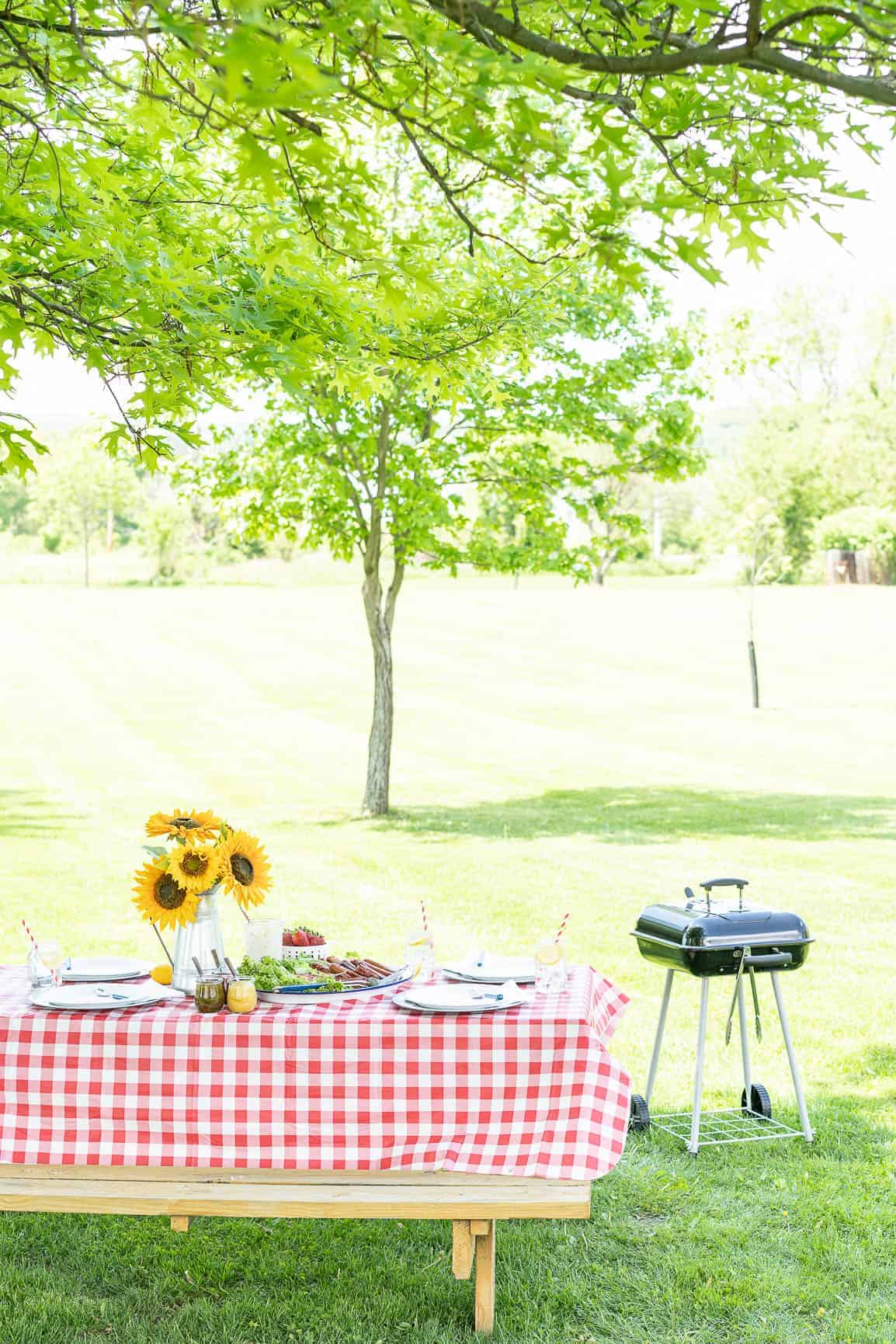



My reason for not using white vinegar and as you mentioned coconut oil is due to health concerns. I’m on your side. You say anything contrary to the popular vote you always have someone down your back. I try to help people and go as far as purchase health products from a well known DVM and they just let their animal die. I’m not bothering anymore.
Hi, how do they compare apples to apples?
Hey Lee – Can you clarify your question?
I’ve just purchased a small humidifier that requires weekly cleaning of water scale from the tank. Instructions call for two cups of white vinegar to do this. I’m not willing to buy GMO vinegar but organic vinegar is just too expensive for this purpose. Can I use Sal Suds for this, and how would I do that? Thanks for the guidance.
I’m not familiar with how to us sal suds for this application, I suggest reaching out to Dr Bronners directly.
Hello Hayley! Thank you for sharing this. I am also moving away from that conventional, generic supermarkets’ brand of distilled white vinegar in favor of not supporting GMOs. I do have a question though. Whole Foods sells a one gallon container of organic distilled white vinegar with the non-gmo stamp for just over $5. That seems reasonable. Wouldn’t that be an affordable option? Thank you.
yes, $5 is a great price! We (like most people) don’t have a local Whole Foods but it’s a great tip for those who do!
I have heard that adding vinegar in the washer rots out rubber hoses and rings. Also, a lot of people think that white vinegar and baking soda (together) make an effective cleaner because it fizzes when, in actuality, they neutralize each other and so, therefore, are ineffective as a cleaner. Separately, they are okay, but not when mixed together – together you are just basically ending up with salt.
Homemade cleaning products, that’s a great idea. Cleaning products are filled with chemicals and if there is any way to make it them chemical free then it will be great for natural cleaning. Thanks for sharing this.
you say no to gmo and vinegar and then you tell us to use vinegar inthe washer??
Anytime I share using vinegar it’s ALWAYS organic. Most folks use distilled white vinegar by the gallon, I do not because of the environmental and health impacts.
Sal Suds contains SODIUM LAURYL SULFATE, not going there!
Sherry – I’m so glad you brought it up! I suggest reading THIS –> http://www.lisabronner.com/there-is-no-cancer-risk-from-sls-sodium-lauryl-sulfate/
I’ve been using a clean shampoo and apple cider vinegar for rinse for my hair. Is that GMO too? I’ve been using melaluca mela Majic concentrate for cleaning for years, it has tea tree oil in it. Works really well.
Apples are not currently a GMO
Can you tell me the other ingredients in YL theives cleaner? Another eo company makes a simular product but it contains a not so friendly ingredient
I absolutely agree with you! I usually use vinegar to clean with, but I have never thought of what whey have actually made it! I think that I also need to change the natural cleaners that I use at home! Many people have already recommend Branch Basics natural cleaning products to me and I think that it is time to try them! Spray mops are also really nice! Thanks for sharing!
I read not too long ago that hydrogen peroxide actually did better in a cleaning test than vinegar, Lysol and Thieves cleaner. A former science researcher turned stay-at-home mom tested many cleaners and concluded hydrogen peroxide did better cleaning after the flu virus than all others. I have switched to using HP spray in my ba throom and it is still cheap and not gmo derived I believe. 🙂 thanks for the article!
Hi Erin, how much h2o2 to water for your cleaners? Thanks for your time! Trudy
Hi Hayley,
I love your blog and love seeing this post! Thank you for using and loving Branch Basics!! We’re honored!
Happy Cleaning,
Allison
Excellent article and very informational! Since going Paleo a year and a half ago, skin and body products and household cleaners are the next step in my transformation to a healthier life.
I have been using Branch Basics and love that product for everything including oven cleaning and that is the main reason I purchased the product. There are 2 formulas for mixing 1 part to 5 parts or 1 to 1 part. I recently purchased Thieves from YL and will be mixing that for my veggies and some other cleaning but for now am happy with Branch Basics. I do use vinegar for some of my towels in washer. I am looking into something else here as vinegar has GMO and I am with you I do not like to purchase GMO.
What is the difference in the Thieves Household Cleaner and just using watered down thieves essential oil?
Thieves household cleanser concentrate is more of a soapy cleansing spray with Theives, it has more cleaning power than just thieves in water (which would be of a disinfecting spray, but not a cleaner per-se)
I use Branch Basics and Young Living oils. Love them both!
I came across this article when a friend shared it on facebook. I try to do a healthier, natural, non-toxic lifestyle where I can. One thing that some people that are into the healthier lifestyle don’t know about concerning toxic things is this: if a cat is part of your “family”, essential oils can be toxic to them. Just like chocolate is fine for humans but not good for dogs. Essential oils are fine for humans, OK for dogs, not good for cats. Supposedly some aren’t as bad as others, but I just prefer not to use any essential oils in my house and around my cats. Just thought you’d like to know for people whose cats are as important to them as their human family.
Of course EOs should always be used with caution, however they can safely be used around cats. (I personally don’t use them ON my cats, bu others have) There are some amazing books you can read on the topic 🙂
thanks for that tip about essential oils being harmful for cats and I’m probably sure some smaller breed dogs and other animals too.
I use that exact mop for the same reason. Love it! Also just started with the Young Living essential oils. Very impressed with the Thieves products and how that got its name!
As a nurse who works in surgery, I’ve seen many chemical sanitizers, but simple rubbing alcohol has proven one of the best. It is harsh on skin and the airway when inhaled so I would never recommend using it full strength. About 6 years ago, I purchased several spray bottles. I mix water with the rubbing alcohol (3:1 or 4:1, that is, water:alcohol)). I mist my counters, sinks, toilets, shower, tub, outdoor furniture and one of the floors that can handle alcohol, then wipe them clean. Two bottles have diluted bleach water to be used only when absolutely necessary. My dad was on home dialysis so things had to be sterile. We used diluted bleach water (with gloves) for sterilizing surfaces. We were told that was better than any store-bought product because it does not leave a residue.
Salt water is another great natural cleaner, disinfectant, mouth rinse or gargle solution.
I am delighted that I am saving tons of money because I no longer buy ANY commercial/chemical cleaners. A bottle of rubbing alcohol, peroxide, or bleach is very inexpensive and lasts a very long time. I realize not everyone will agree with me and I will be the first to say I am new to this way of thinking, so please be kind when judging my comments.
About a year ago, I started using white vinegar as my laundry “soap” AND “fabric softener”. My towels and washcloths are no longer gummy and are TRULY fresher! This saved many of them that had taken on the infamous UN-fresh scent and gumminess from being tossed out. Sometimes I will use baking soda INSTEAD OF the vinegar, but NEVER together.
Vinegar is MUCH better for your washer. It removes all the gooey mess left behind from the phosphates in laundry soap and softener, and therefore, will also be much better for a field system. As for your comnents regarding vinegar and GMO’s, I will have to rethink all of it now, unfortunately….
Do you have a recommendation for dishcloths or cloths used to wipe off surfaces? I can’t stand using a dishcloth to wipe off counters or the thought of a “dirty” towel laying around the kitchen but using paper towels is costly. Suggestions?
I use thin white cotton flour sack towels and wash rags in our kitchen – we still use some paper towel (unbleached and put into our compost bin not thrown away)
Thank you Hayley. I will try those towels.
Brenda, you mention using vinegar in lieu of conventional (and usually highly toxic) laundry products. Can you explain to us precisely HOW you use vinegar…i.e., quantity ratios (vinegar and water levels) as well as quality (wash and rinse water temperatures)?
Thank you!
–Mae, OTP in the ATL, NOV.12.2015
Hi Mae,
I fill the soap and softener dispensers in my washer with the vinegar. I assume the dispensers hold about 1/2 cp each (front end washer). If I have a load that is particularly damp or musty, like towels that may have sat around damp for a few days or a load of used washcloths, I will add about 1 cup of the white vinegar directly into the washer, in addition to filling the dispensers normally. This was particularly helpful when I first started using the white vinegar instead of commercial laundry soap because there was such an unseen buildup of gumminess from the phosphates in those other products.
As far as temperature of water, most of my loads are done with warm water because my new washer does not let me change the temperature freely. (I can get cold water only if I choose “economy wash”, and hot water only when I choose “sterilize”, then it will be a 2 hr wash!)
If I was able to choose different temperatures, I would most likely use the same amount of the white vinegar, no matter what the temperature.
As far as water levels: with these new washers you cannot choose SIZE of load either, but I have heard they are “smart programmed” to use a water ratio based on the weight of the items in the washer. That being said, if I have a small load for a “quick wash” selection, I usually use about HALF the amount of white vinegar, but again, that can depend on how soiled or “stinky” the load is.
I hope this answers your questions, Mae.
It certainly did, Brenda. Thank you!
–Mae, OTP in the ATL
NOV/13/2015
Speed Queen Washers….you can select load size. I have had one for a year and so far so good. That auto water level garbage is….garbage I no longer have to put up with. The last washer I had employed “infuser technology” aka anemic agitation of clothes that were not even submerged.
Oh dear. I’ve been using banking soda and vinegar together in the wash on our clothes for years. Why do you believe that’s bad, please? Thanks!
Thank you, I appreciate your honesty and information. I hate GMOs